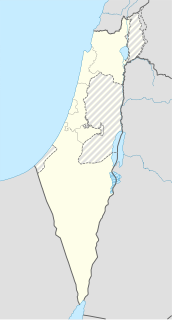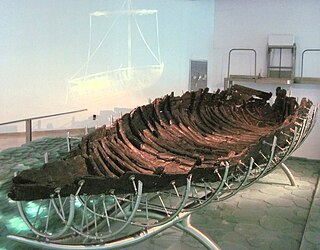 W
WAin Farah is an archaeological site in Darfur in western Sudan. It was at one time the capital of the last Tunjur ruler, Shau Dorshid. It comprises large-scale area of stone and brick walls. It has been visited or described many times. Ain Farah moved one author to quote Macaulay – “like an eagle’s nest that hangs on the crest”, for it is built some 100 metres (330 ft) above a spring. It is characterised by several hundred brick and stone structures and terraces, and is defended by steep ridges and by a massive stone wall 3–4 kilometres (1.9–2.5 mi) long. There is a brick and stone edifice which appears to have served as a mosque, a large stone group which may have served as a public building, and a main group on the highest point of the ridge, described variously as a royal residence or military defence.
 W
WEl Salt is an archaeological site from the Middle Paleolithic near Alcoy, in the Spanish Province of Alicante, which was frequented by groups of archaic humans for thousands of years. Scientists have found evidence of Neanderthal settlements, including fire pits and flint tools, dating back at least 50,000 years, including six teeth; they disappeared from the site and possibly the Iberian peninsula some 45,000 years ago. In 2014, the then-oldest known human coprolites were discovered at the site, which revealed that Neanderthals' diets included plants.
 W
WGesher is an archaeological site located on the southern bank of Nahal Tavor, near kibbutz Gesher in the central Jordan Valley of Israel. It bears signs of occupation from two periods, the very early Neolithic and the Middle Bronze Age. The site was first excavated between 1986 and 1987 by Yosef Garfinkel of the Hebrew University of Jerusalem and between 2002 and 2004 by Susan Cohen of Montana State University. The average of 4 radiocarbon dating results suggested inhabitation of the settlement around 8000 BC.
 W
WORP Grom was the lead ship of her class of destroyers serving in the Polish Navy during World War II. She was named after the Polish word for Thunderbolt, while her sister ship ORP Błyskawica translates to lightning.
 W
WHorvat Galil is an archaeological site in the Upper Galilee, Israel, 13 kilometres (8.1 mi) from the coast of the Mediterranean.
 W
WJubail Church is a 4th-century church building near Jubail, a city in the Eastern province on the Persian Gulf coast of Saudi Arabia.
 W
WǁKhauxaǃnas is an uninhabited village with a ruined fortress in south-eastern Namibia, east of the Great Karas Mountains. It is the oldest systematically designed and built structure in Namibia, pre-dating all buildings erected by Europeans. Built at the end of the 18th century, most likely between 1796 and 1798 by Klaas Afrikaner and his two sons Jager and Titus, ǁKhauxaǃnas served as a hidden retreat and a fortress to fend off possible pursuits by Cape authorities. The Orlam Afrikaner tribe left the place in the 1820s but it continued to be inhabited by the Veldschoendragers (ǁHawoben) tribe until the mid-19th century.
 W
WLa Mojarra Stela 1 is a Mesoamerican carved monument (stela) dating from 156 CE. It was discovered in 1986, pulled from the Acula River near La Mojarra, Veracruz, Mexico, not far from the Tres Zapotes archaeological site. The 4+1⁄2-foot-wide (1.4 m) by 6+1⁄2-foot-high (2.0 m), four-ton limestone slab contains about 535 glyphs of the Isthmian script. One of Mesoamerica's earliest known written records, this Epi-Olmec culture monument not only recorded this ruler's achievements, but placed them within a cosmological framework of calendars and astronomical events.
 W
WThe Ancient Galilee Boat, also known as the Jesus Boat, is an ancient fishing boat from the 1st century AD, discovered in 1986 on the north-west shore of the Sea of Galilee in Israel. The remains of the boat, 27 feet long, 7.5 feet wide and with a maximum preserved height of 4.3 feet, first appeared during a drought, when the waters of the Sea receded. Other than the dating, there is no evidence connecting the boat to Jesus or his disciples.
 W
WThe Jōmon Venus is a dogū, a humanoid clay female figurine from the Middle Jōmon period (3,000–2,000 BC), discovered in 1986 in Chino, Nagano Prefecture, Japan. It was designated a National Treasure in 1995, the first Jōmon-period artifact to be so designated.